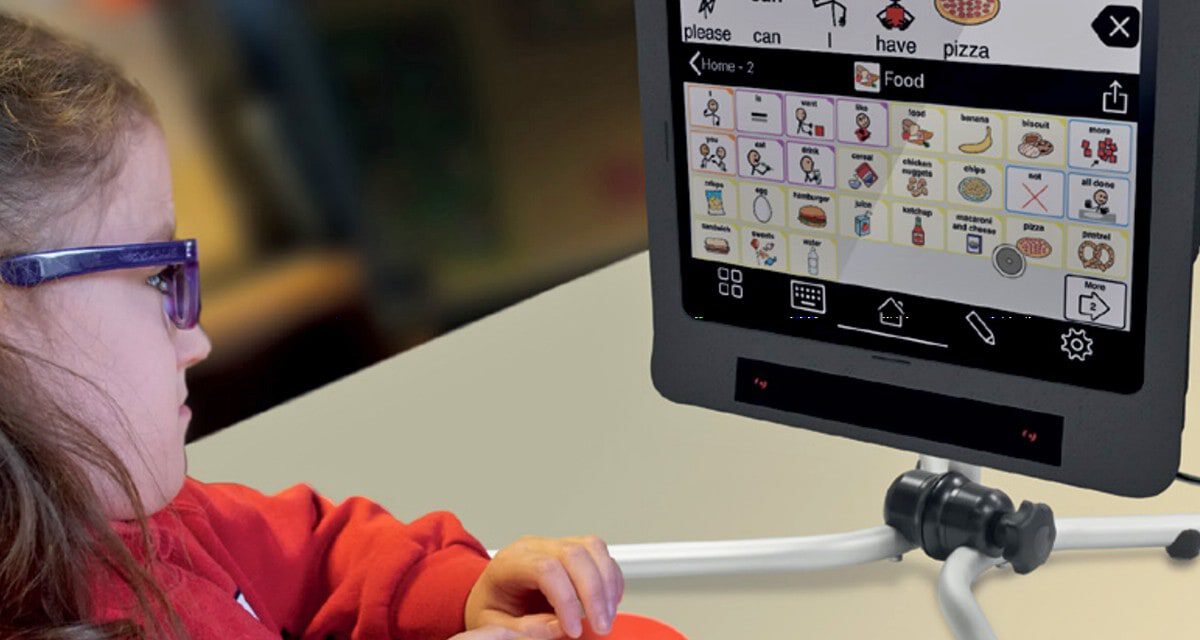
What is an Intellectual Disability
Intellectual disabilities are identified by the NDIA as mild, moderate, severe or profound in accordance with current DSM-5 criteria. The severity of your disability reduces your level of independence and increases your reliance on others.
An intellectual disability affects how a person thinks, learns and processes information. As a result of a severe or profound disability, you are likely to also demonstrate high physical support needs due an associated physical impairment.
Intellectual Disability and Physical Impairment
What is physical impairment?
This describes the difficulties someone experiences moving their body to walk, sit down, roll over and move their limbs.
In severe cases, people with intellectual disability demonstrate high physical support needs. This is due the significant impact their cognitive impairment has on their physical skills and abilities.
Physical impairment may also be a result of a condition co-occurring with an intellectual disability, such as Cerebral Palsy.
Physical impairment can also be attributed to delays in achieving developmental milestones and overall physical development, whereby an intellectual disability can impact motor coordination skills.
High Physical Support Needs
High physical support needs involve a high level of person-to-person support and the use of assistive technology. This is directly related to a physical impairment.
What is person-to-person support?
Person-to-person support may involve one person or two people helping you with the various routines that make up your day, including showering, eating, drinking, toileting, etc.
These tasks typically involve manual handling, where you may require assistance to transfer or reposition.
What is manual handling?
Manual handling involves the practice of safe movements and lifting to reduce the risk of injury to the participant and support workers involved.
In this case, using assistive technology may be necessary. This is to keep you and your support workers or carers safe.
Due to cognitive impairment resulting from your intellectual disability, it may not be safe to operate assistive technology independently. In most cases, assistance is needed to operate devices to ensure your safety and the safety of others.
What Assistive Technology Will Help Participants with Intellectual Disability?
There is a wide range of assistive technology that can support NDIS Participants with severe or profound intellectual disability.
A common question our NDIS Navigators are asked is "What assistive technology can I use my NDIS funds for to help with my intellectual disability?"
We asked our resident OT to tell us what type of equipment she regularly prescribes to assist NDIS Participants with severe or profound intellectual disabilities.
Here are the main assistive technology solutions she mentioned:
- Mobility Devices such as a wheelchair
- Transfer Assistive Technology such as hoists and slings
- Bedroom Assistive Technology such as adjustable beds and pressure mattresses
- Bathroom Assistive Technology such as shower commodes and toilet equipment
- Living and Dining Assistive Technology such as seating and special trays
- Kitchen Assistive Technology such as tools to help you cut and prepare food
Mobility Devices to Support NDIS Participants with Intellectual Disability
Manual and Powered Wheelchairs
A manual wheelchair involves a seat and backrest attached to a frame with two large wheels with push-rims. Either the user self-propels the wheelchair, or it is attendant propelled via handlebars positioned at the rear of the backrest.
It can be difficult to accommodate seating and positioning needs for someone with a severe or profound intellectual disability in a manual wheelchair.
A powered wheelchair involves a base with motorised wheels that are controlled by a joystick. Attached to the base include a cushion, backrest, armrests and any other postural supports required.
A powered wheelchair offers a high level of customisation for seating and postural supports. This is often necessary for individuals with a severe or profound intellectual disability with a significant impact on their functional capacity.
To operate a powered wheelchair, the joystick can be placed at the front of the armrests for the user to operate, or at the top of the backrest for carers to operate (or both). Carer operation may be necessary to cater to your intellectual disability.
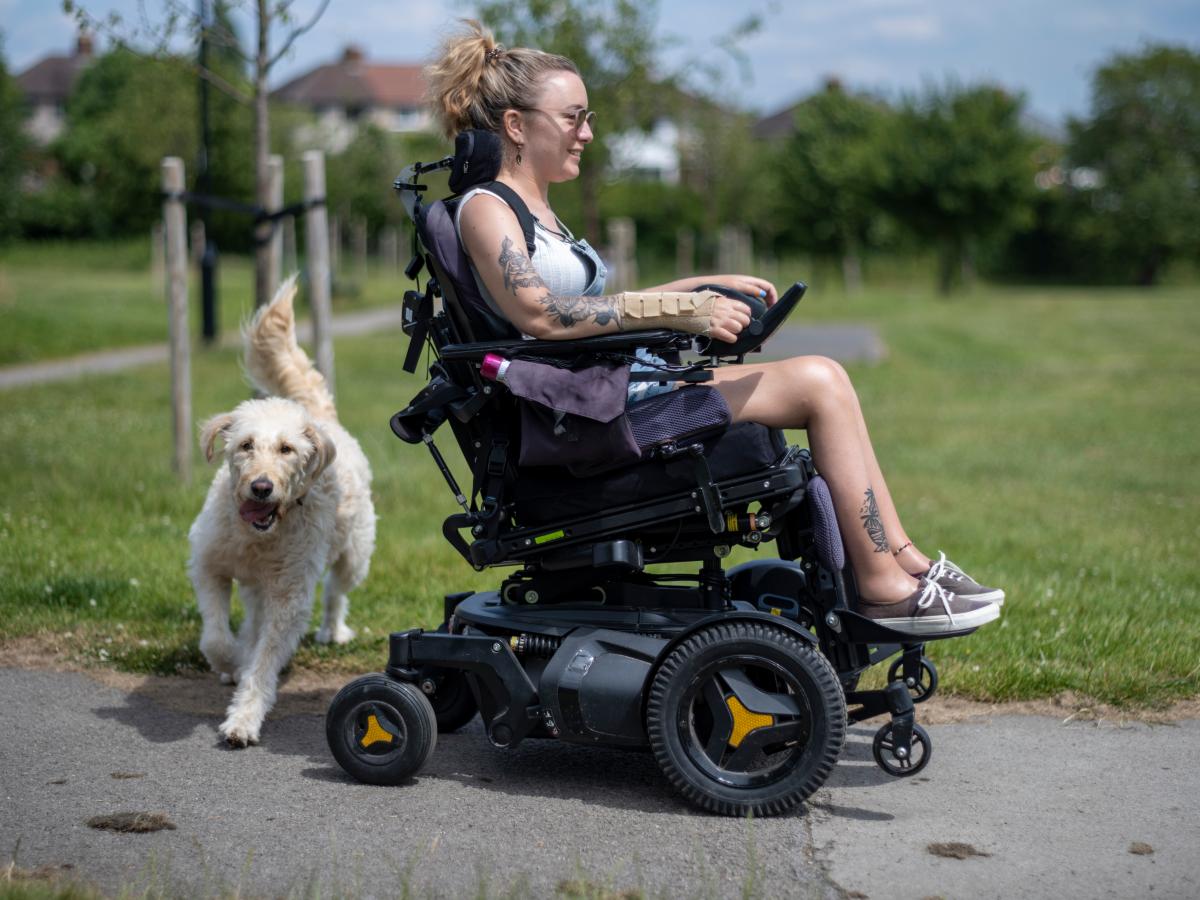
Transfer Assistive Technology
Mobile Hoist
A mobile hoist is a device that is designed to lift and carry (transfer) you from one surface to another. This may be from your bed to your wheelchair, or from your wheelchair to shower commode.
It has a mobile base that can be wheeled from room to room, so long as there are no steps inside the home or other obstacles. Typically, two support workers or carers are required to operate a mobile hoist.
Ceiling Hoist
A ceiling hoist is a device attached to a frame that is built into your ceiling. It can transfer you between surfaces, and can sometimes travel between rooms. It is usually easier to handle compared to a mobile hoist and usually requires one or two support workers or carers to operate.

Sling
Both a mobile hoist and a ceiling hoist require the use of a sling that attaches to the hoist via straps. A large fabric sling supports your whole body when you are lifted between surfaces.
Slings can come in all different shapes and sizes, and be made of different materials and straps designed for a variety of hoists.

Standing Hoist
If you can weight-bear, but require a bit of additional support to stand up, a standing hoist can help you with completing transfers i.e. standing from sitting at the edge of your bed, wheelchair, or recliner chair.
Various slings and straps are available to assist you in using your standing hoist. Typically, a standing hoist is operated by one support worker or carer.
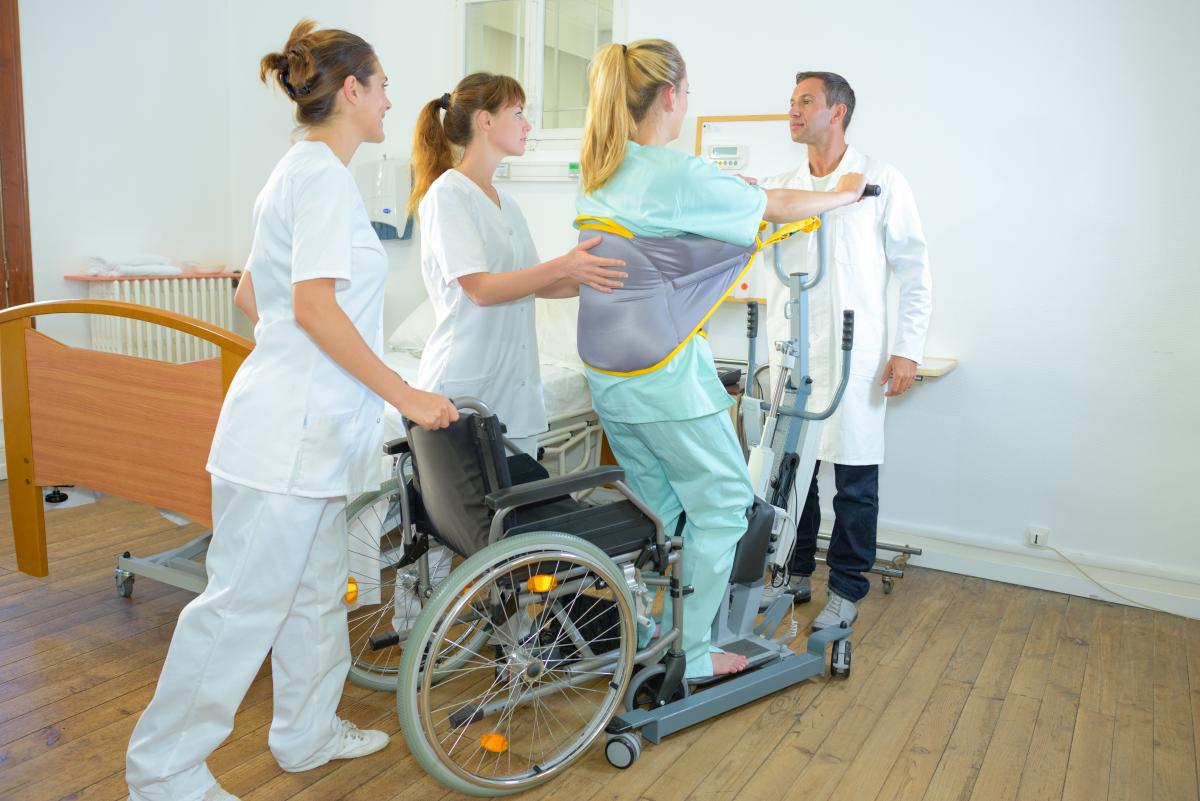
Bedroom Assistive Technology
Hi-lo Adjustable Bed
Bedroom assistive technology involves a hi-lo adjustable bed.
An electronically powered hand remote is available to adjust the power features of the bed.
The power features have various benefits, including:
- Raised back section - elevates the head and body for comfort, positioning, breathing, and eating.
- Lower limb elevation and knee break - supports the lower limb in an elevated position for comfort, pressure care management, management of swelling etc.
- Height adjustability - the bed can be lowered to assist you with standing transfers (if completed), or raise the bed to a height best suited for support workers or carers providing care to you in bed.
An adjustable bed is beneficial for someone with a severe or profound intellectual disability who has difficulty adjusting and repositioning in bed.

Pressure Relieving Mattress
Various pressure-relieving mattresses are necessary for individuals with a severe or profound intellectual disability.
Pressure-relieving mattresses may be:
- Foam mattress - consisting of various layers of foam to immerse the body and distribute pressure
- Alternating air mattress - Air cells within a mattress that are inflated and deflated by an automated pump to redistribute pressure throughout the body for pressure care management
- Combination of foam and air mattress - a pump-free mattress that combines air cells and foam padding to achieve comfort and pressure care management

Bathroom Assistive Technology
Mobile Shower Commode
A mobile shower commode is a waterproof wheeled device that has a similar setup to a wheelchair. It may be helpful for you if you cannot stand to shower and/or require support for personal-care routines.
A mobile shower commode typically has an oval gap in the centre of the padded commode seat, similar to the inside of a toilet seat. This is beneficial as the commode can be wheeled over a toilet so that it can also be used for toileting.
A mobile shower commode requires an accessible bathroom. This involves level (flat) access to a shower recess which ideally does not contain glass screens or doors. The toilet seat needs to be low enough for the commode to wheel over.
Mobile shower commodes are more commonly required by people with a severe or profound intellectual disability who require a hoist to complete transfers. This is because they may not be able to transfer on and off a standard toilet or shower chair.
Additional positioning aids and supports can be attached to the commode.
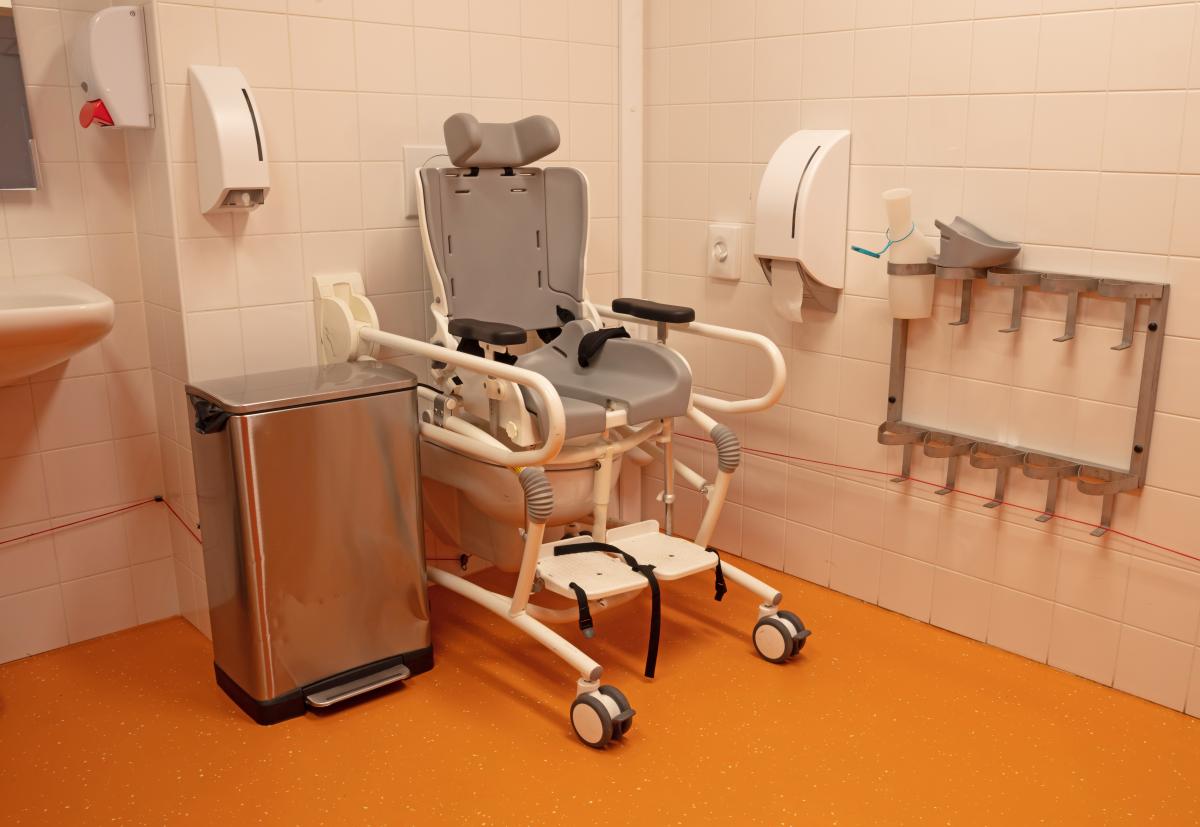
Over Toilet Aid
An over toilet aid is a frame that can be positioned over your toilet to assist with sit-to-stand transfers. This is beneficial for people with a moderate or severe intellectual disability who can stand and walk, and need a little more support with transfers.
An over toilet aid can promote your independence and reduce the need to rely on a support worker or carer to get on and off the toilet.
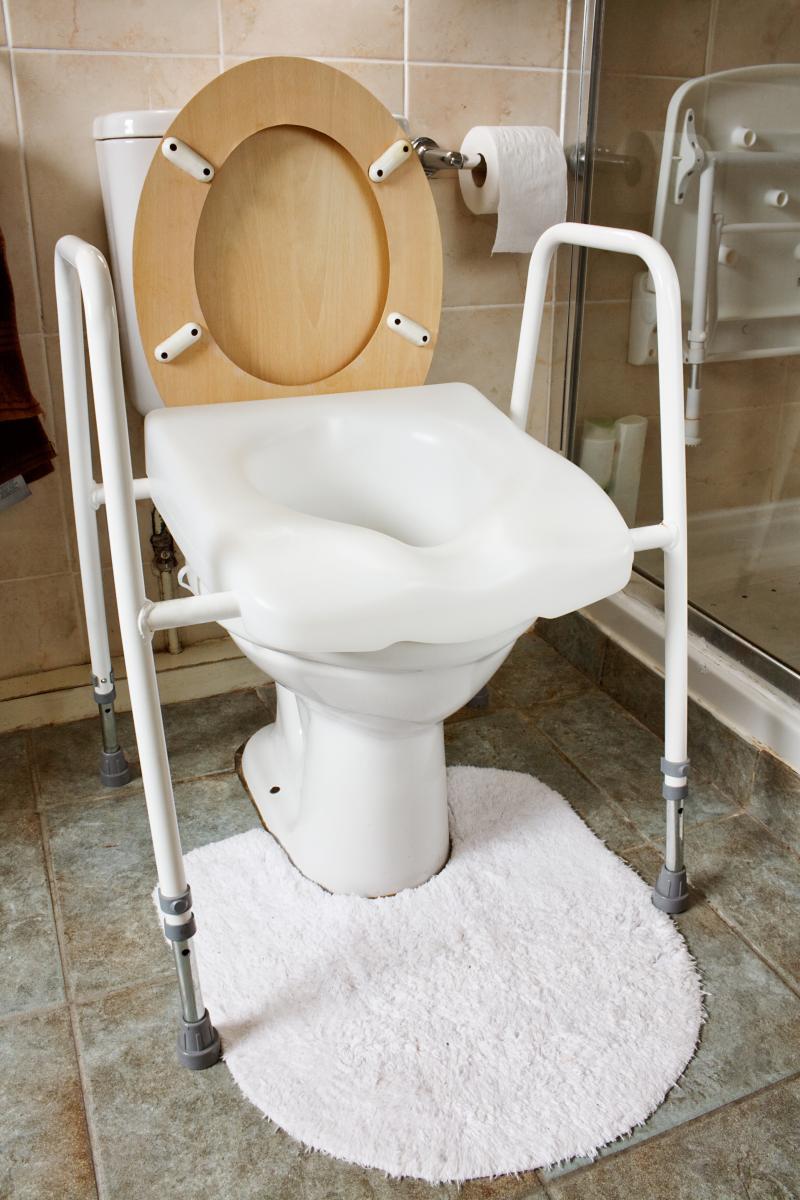
Shower Chair
In some cases, a shower chair may be the support you require in the shower if standing and balancing during your showering activity is difficult.
Shower chairs come in all shapes and sizes, including shower stools with or without backrests and armrests.

Living and Dining Assistive Technology
Living and dining supports can often be overlooked when mobility and transfer assistive technology are prioritised. For someone with a severe or profound intellectual disability and high physical support needs, a standard couch or armchair is unlikely to meet your needs and sitting upright and maintaining comfort will be a challenge.
In this case, a disability-specific recliner chair with additional positioning features is required, to provide an opportunity to sit somewhere else that isn’t your wheelchair or bed for relaxation, leisure and social engagement.
A tray table on wheels that is compatible with the recliner chair is beneficial for eating meals and performing activities.

Kitchen Assistive Technology
Meal preparation aids can be beneficial for individuals with moderate intellectual disability who may have difficulties engaging in the kitchen for meal preparation.
What are kitchen and meal preparation aids?
Kitchen and meal preparation aids are assistive technology or devices to reduce the demands of meal preparation by offering additional support, and stability and reducing the fine motor demands.
Some examples of kitchen and meal preparation aids include:
- Modified chopping board
- Spreader boards
- Modified knives and utensils (thicker or different handle designs)
- Easy open devices - one-touch bottle, jar and can openers
- Kettle tipper device
- Thermomix (in some cases if deemed appropriate following trial with an OT)

Summary
There is a wide range of assistive technology available, with only some of the useful daily living aids discussed above. To learn what is right for you, you may benefit from a Functional Capacity Assessment from an Occupational Therapist.
Find an Occupational Therapist
The MyCareSpace NDIS Navigators can connect you with support workers who have experience with intellectual disability in your area.
NDIS THERAPY FINDER - FREE SERVICE
LET US FIND YOU A SKILLED SUPPORT WORKER



